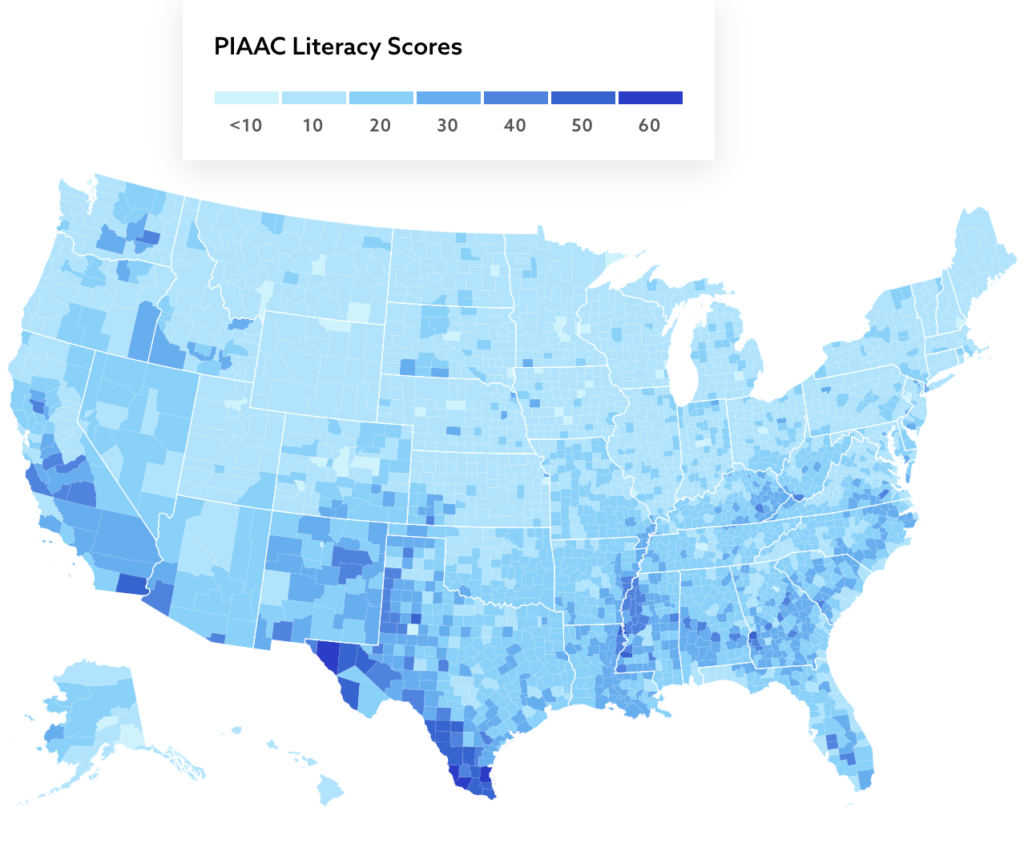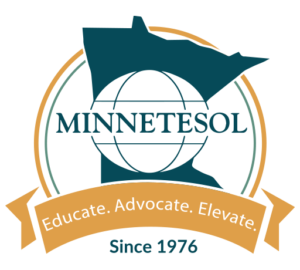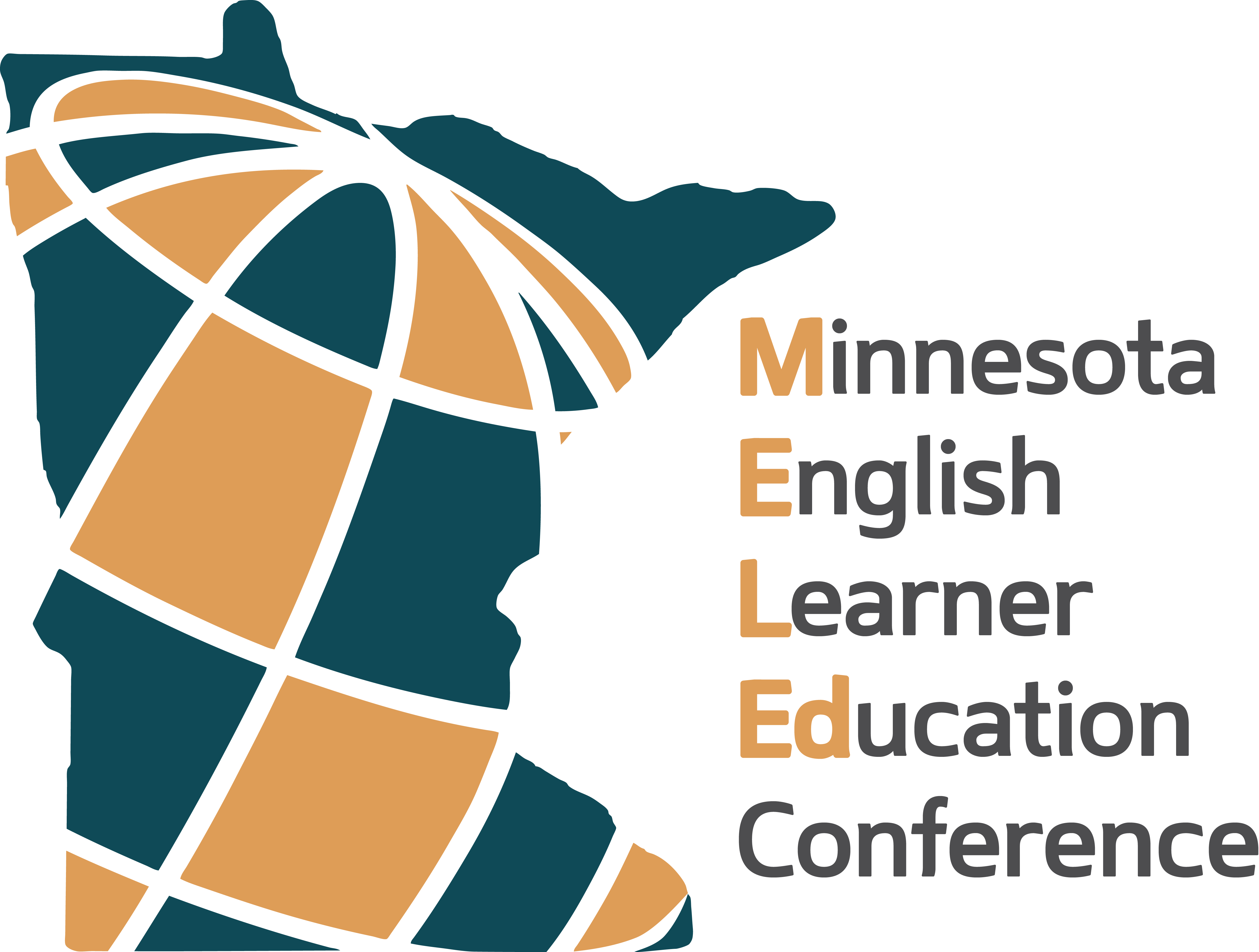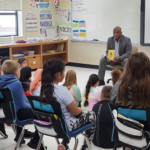Jen Vanek
The COVID-19 pandemic has forced adult basic skills and ESOL programs to offer instruction at a distance. The uncertainty of the future means programs must rethink sustainable alternatives to traditional classroom programming. In this way, the pandemic has forced a change that might just reshape adult learning—potentially making it more flexible and personalized in the days to come.
Key words: COVID-19, adult ESOL, online learning, Adult Basic Education
The COVID-19 pandemic has forced teachers to rethink the way they support learners and provide instruction. This is a global challenge: according to data from UNESCO (n.d.), the coronavirus has instantly forced 1.9B students and teachers worldwide, effectively 70% of total enrolled learners and their educators, online. Since mid-March 2020, the Ed Tech Center @ World Education has been supporting adult basic skills programs, as they have moved their instruction online, by sharing research, resources, and innovative strategies we’ve seen percolating in Adult Basic Education (ABE) and English for Speakers of Other Languages (ESOL) “classes” across the United States. As programs have risen to the challenge to meet the needs of their learners, the growth in distance education we’ve observed has been unprecedented.
This rapid expansion of distance education in many states is built on a foundation of incremental growth in adult basic skills and ESOL programs over the past several years. Federal enrollment data for IDEAL Consortium1 member states, states that have prioritized development of distance education programs and collaborate as a community of practice to do so, show that in FY 2014-2015, 12,820 distance learners took more than 50% of their coursework online in these states. In FY 2018-2019, that number grew to nearly 30,000.2

This is promising to be sure, yet, those learners are only a fraction of the total number of students enrolled in adult basic skills and ESOL programs, and those enrolled represent only a fraction of adults in this country who have basic skills and literacy needs or lack a high school diploma. This reality is mapped nicely in a new Barbara Bush Foundation resource which shows the Programme for the International Assessment of Adult Competencies (PIAAC) adult literacy data at the county level. Figure 1 shows a screenshot of the interactive map on the foundation’s website, which illustrates areas of the United States with the lowest scores on the most recent PIAAC literacy assessment and then layers on data showing the connection between literacy levels and factors that negatively impact well-being.
How is this related to the current pandemic? The map shows there is clearly great need for programming to support adult literacy in the United States. Even before the pandemic, the programs in place were not meeting all of the need. Leveraging technology can extend and enrich learning to make it more available to a greater pool of adult learners (Rosin et al., 2017; Vanek et. al, 2019). Despite the steady progress establishing distance education, there have always been programs that have struggled making distance and online learning a priority—perhaps because of concerns about access to technology or the challenge of helping students and teachers feel comfortable working together remotely. These are still valid concerns, yet today, because of the pandemic, reticence about moving online is no longer an option. Programs that had previously been uncertain about distance education have now had no choice but to figure out how to make it work. Though it has not been easy, many have made the shift and are now offering at least some instruction at a distance, and much of that using online resources and technology.
Innovation forced by the pandemic as impetus for long-term change
As I’ve watched all this unfold, I’ve been reminded of a book called Disrupting Class by Clayton Christensen. Somewhat dated now (written in 2011), the basis of the book is a concept called disruptive innovation, a theory that explains how a new strategy, process, or tool disrupts existing structures (Christensen et al., 2011). The theory, applied to education, describes how new technologies (or use of them) can disrupt existing learning structures (traditional classroom programming). The theory of disruptive innovation suggests the trajectory of online learning is a path that could lead toward creating relevant and more flexible learning experiences for more students—expanding opportunities that are more accessible and personalized, in contrast to the classroom-bound structures that don’t always work for learners because of time and place constraints (e.g., learners can’t make it to class because of work or family obligations).
The pandemic and the forced move toward more use of online technologies is a disruption that has required a shift to more flexible learning opportunities. Since mid-March, I’ve seen programs offering a range of online learning options and teachers across the United States move more to a facilitator role. The result has been increased student-centered learning made possible as instructors draw on multiple technologies and online resources to meet different students’ needs. As teachers and learners grow more comfortable working together online, instruction becomes more and more student-driven because learners can work independently, collaborate via technologies with their classmates, and access personally-relevant instructional content.
For example, adult ESOL instructors are creating opportunities for learning online outside of their scheduled Zoom class sessions. A common practice is to use a class website as a place to bank supplemental resources that they can assign according to the needs or interests of the learners who are present. The same site can be used to integrate Google docs and slides to support collaborative learning online. Another common example is use of such a website in tandem with a free online learning curriculum (e.g., USA Learns or We Speak NYC). The teacher can monitor learners’ work and assign supplemental resources according to what they observe in the curriculum. Other teachers are delivering micro-learning opportunities sharing media-rich content through WhatsApp. Specific examples of how teachers have used these strategies and the resources they created can be found in the EdTech Center’s archive of Distance Education Strategy Sessions.
Steps to making this a reality
Such instruction may seem far-fetched in some places, but I think, starting small and building on the forced innovation in place now during the pandemic, we can reshape the work of adult basic skills and ESOL programming to deliver more flexible, truly personalized, and relevant learning experiences for more adult learners than our programs have had the capacity to reach via the old structures.
You may have already taken the plunge and have worked out how to move instruction online. For programs still feeling their way and hoping to expand their distance offerings beyond paper packets, here are some critical first steps, based on work published on the Ed Tech Center’s Tips for Distance Learning, to help.
1. Make a communication plan.
Collect all relevant contact information for your learners (e.g., cell phone numbers, email, home addresses), so you know how you will keep in contact with them. Be sure to know which of them is preferred by the students; possible communication channels might be phone calls, videoconferences, texting, apps (such as WhatsApp or Remind), or email.
2. Make a list of your program’s technology resources (hardware and software) and determine your learners’ ability to access online tools.
What technology access do your teachers and students have (e.g., licenses to online products, web-based teacher-created curricula, devices, Internet)? Make a list of these assets and plan how you will communicate them to learners and staff. Consider steps you might take to prevent access-equity gaps from getting wider. What resources can you refer your learners to—things that leverage the access they have, like mobile phones? If you know that there is no access, you may consider packets with some essential learning materials.
3. Help your learners access free or reduced cost Internet and data plans.
The National Digital Inclusion Alliance (NDIA) has curated a list of special offers for access to broadband from Internet Service Providers across the United States. Consider starting a tablet or laptop lending program if you have the devices.
4. Look to see what support your state adult basic education leadership is offering.
The Minnesota Department of Education, Adult Basic Education, has published guidance to help programs move instruction online. Updates can be found on the MNABE support website. If you are not from Minnesota, do check with your state professional development leaders to see what’s available.
5. Get training to key staff.
There are a multitude of technical support and professional learning resources for teachers. ABE teachers in Minnesota should follow the COVID-19 resource site put together by ATLAS. The linked newsletters featuring teacher stories, ABE Voices Across the Distance, are very useful. The EdTech Center @ World Education also has a site, Tips for Distance Learning, which links to offers from curriculum developers and directories of free open education resources. The site also shares briefs describing essential distance education components, which are based on past IDEAL Consortium and EdTech Center research.
6. Provide ample support materials to learners.
Learners need proactive support. Consider recording a webinar or creating a frequently asked questions (FAQ) page that maps out key steps for accessing the technology resources used in instruction. Make some screencasts with audio instructions to help learners navigate the online resources you hope they will use remotely. You can use free screencasting tools like Loom, Screencast-o-Matic, or Screencastify. Send links to the videos using communication channels or technologies you know are most easily accessed by learners. Many resources have developed tutorials, several in multiple languages, so check first before spending time to create your own and generate inspiration by building off of existing community resources. For example, St. Paul ABE has posted this site with multilingual how-to videos. New York TESOL has created and posted videos about how to use Google Classroom in this YouTube playlist.
7. Set up a remote support system.
After providing some initial proactive support, you need some way for students to get help with educational technology if they cannot meet with a teacher. Consider a dedicated phone line or chat system (you could use WhatsApp). You might have office hours using the free version of Zoom or BigBlueButton. Have teachers practice with each other and practice using these with as many learners as you can while they are still with you in person.
Attending to Learner Affect and Needs
Learning at home is going to be very difficult for many learners. They might be trying to work from home, raise children, or educate their children while trying to continue their studies with you. Even if they have technology skills, they may not have independent learning experience, so they may not know where to begin when it comes to making choices about scheduling time, choosing resources, or reaching out to you with questions. While this is a unique opportunity to push learners toward more digital literacy, be wary of the cognitive load required.
Start with one technology.
Preferably introduce one technology at a time, and start with one that learners know how to use already. Texting and use of the app WhatsApp is a solid choice. (The image to the right is adapted from WhatsApp promotional materials.)
In 2019, 68.1 million United States mobile phone users accessed WhatsApp to communicate (Clement, 2020). Anecdotal reports and informal surveys done by teachers who have posted to the LINCS Integrating Technology Community show that many ABE learners are among this group. WhatsAPP is great because students can communicate with a familiar technology through a familiar action—texting. Pew Research data from as far back as 2011 show that 76% of Americans texted (Smith, 2019).
WhatsApp (or Remind as an alternative) is an excellent means by which to communicate essential information. Because you can send video, audio recordings, images, links, and text notes, you can deliver instructional resources to learners easily. For a comprehensive guide to using WhatApp for instruction, check out ABE expert and LINCS facilitator David Rosen’s continuously updated resource. As posts to the forum show more WhatsApp strategies, Rosen adds them to the document.
Don’t forget to pretest.
Though options are now falling into place for remote standardized testing using (e.g., CASAS, TABE, and Best Plus), you may not yet be doing official pre- and posttesting to record level gains. You will still need to assess your learners to better understand what learning resources you might share with them. There are several strategies I’ve noticed in use by programs across the country during the pandemic.
The easiest way to pretest is to make use of placement assessments that may be integrated into an online curriculum your program may have access to. The benefit to doing this is you’ll have a range of assessments across the content areas you are teaching, and the learner will likely get a learning plan created for them within the product.
If your program does not have access to a licensed curriculum, you can still do an initial assessment for literacy level. Read Theory is a free app that gauges a learner’s reading level and then helps students improve their reading comprehension skills by moving through increasingly more complicated passages.
For students who cannot pretest using a technology, you might consider an oral assessment. A simple phone call with a student can help you understand their speaking and listening proficiency. For more formal assessment, consider using the verbal skills proficiency assessments from CASAS or Best Plus if your program uses either one of them.
Be flexible. Maximize connection over content.
Because learners are likely struggling to balance supporting their children, working, and managing the stress of the pandemic, they may not be in the best mindset for making academic progress. This does not mean they should be dropped! Many of these learners may not have other sources of information and support at this time, so the goal for those who are not making progress is to stay connected. You might sustain the connection by providing vital information about how to stay safe or access support resources. The connections you can sustain now will make it more likely that these students will return when your program doors reopen. A very useful site for information about the pandemic is Switchboard, a resource hub for refugee service providers developed with the support of the Office of Refugee Resettlement (ORR). The site features multilingual videos, posters, and informational PDFs explaining COVID-19 and how to stay safe during the pandemic.
Building on the emergency response
The distance education options in place now provide a glimpse of what adult ESOL classes in the United States might look like after the pandemic—a new model of more personalized blended learning. It is likely that even when doors to programs open, it may be with a requirement for social distancing. With fewer learners in the classrooms, more will need to be taught online. Using a blended approach, a teacher might support a classroom of students, but instead of all being in class at the same time, small groups of students would take turns being in the classroom. The teacher could work with each small group in person, in a classroom setting, on activities that expand on or prepare students for online learning that happens in between class meetings.
Some programs new to distance education during the pandemic have begun to circle back and revisit initial strategies and processes put into place; they’ve moved beyond the triage way of working and are looking to strengthen distance education with sustainable instructional practices and administrative processes. This work is being done with the view that we may not return to the old normal for quite some time, if at all. There is so much in the works now that will support forward momentum of distance education—more gracious National Reporting System policies, including one that allows for remote testing; a plethora of professional development opportunities; increased access to devices and broadband for many students across the country; more digital instruction resources; and most importantly, students who have now had a glimpse of the flexibility and personalization afforded through distance education. We’re not likely to look back at this time and see any silver lining, but hopefully, we’ll look back and see a time of incredible growth and innovation in the field of adult ESOL and literacy instruction.
Notes
- IDEAL Consortium is an initiative of the EdTech Center @ World Education, which the author facilitates.
- These data are pulled from the U.S. Department of Education’s Office of Career, Technical, and Adult Education National Reporting System database, accessed here: https://wdcrobcolp01.ed.gov/CFAPPS/OVAE/NRS/login.cfm
References
Christensen, C. M., Horn, M. B., & Johnson, C. W. (2011). Disrupting class: how disruptive innovation will change the way the world learns (2nd ed.). McGraw Hill.
Clement, J. (2020, January 8). WhatsApp Status daily active users 2019. Accessed 19 May, 2020 at https://www.statista.com/statistics/730306/whatsapp-status-dau/
Rosin, M., Vanek, J., & Webber, A. A. (2017). How Investment in technology can Accelerate Collective Impact in Adult Learning. World Education, Inc. https://edtech.worlded.org/resources/investment-in-technology/
Smith, A. (2019, December 31). Americans and Text Messaging. Accessed 19 May, 2020 at https://www.pewresearch.org/internet/2011/09/19/americans-and-text-messaging/
UNESCO. (n.d.) COVID-19 Educational Disruption and Response. Accessed 19 May, 2020 at https://en.unesco.org/covid19/educationresponse
Vanek, J., Rosin, M., Silbert, J. H., Tashjian, K., & Webber, A. A. (2019). Technology, innovation, and adult career pathways. COABE Journal: The Resource for Adult Education (November), 124-132. https://coabe.org/wp-content/uploads/2019/09/TheResourceforAdultEducationCareerPathwaysSpecialEdition.pdf












